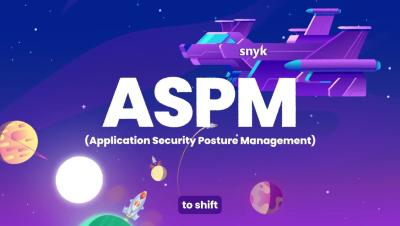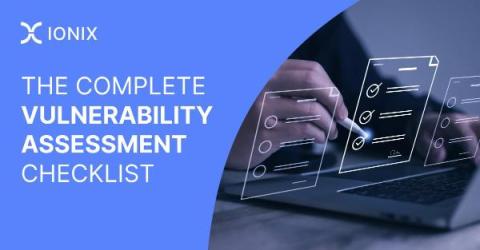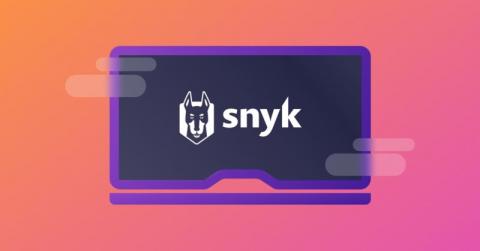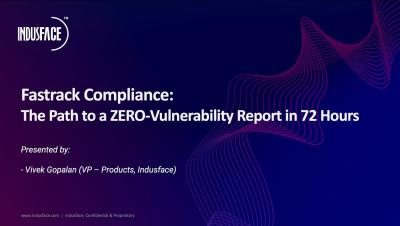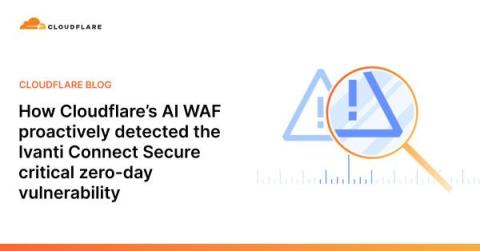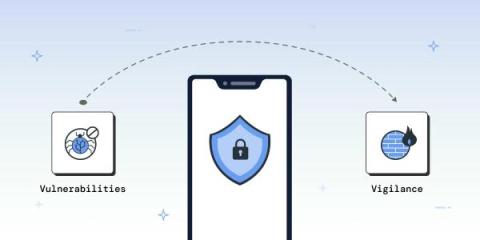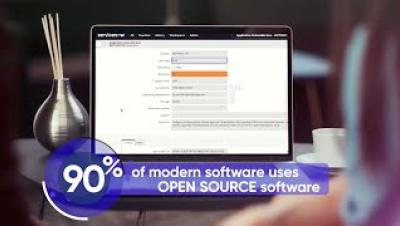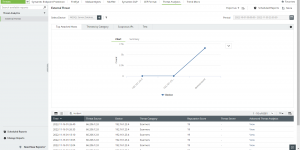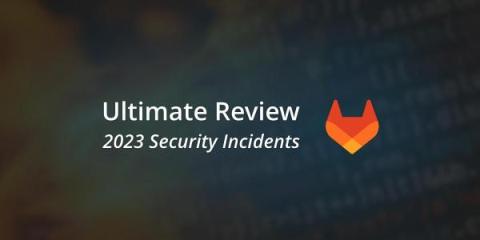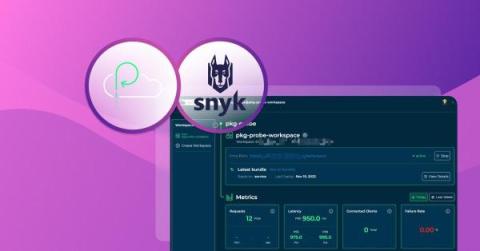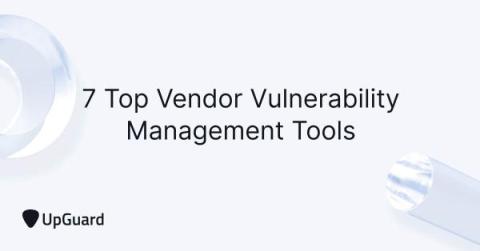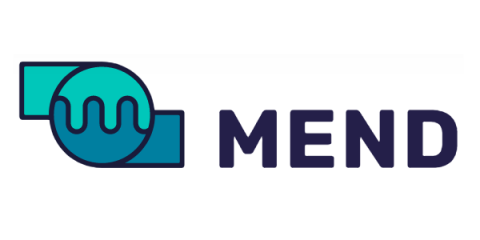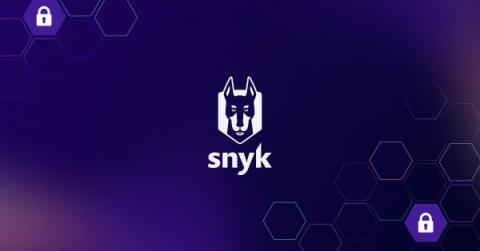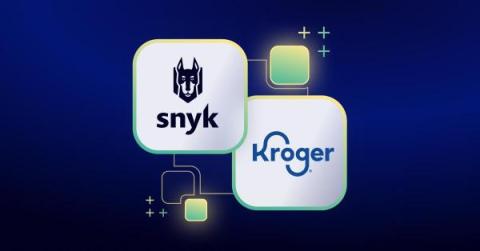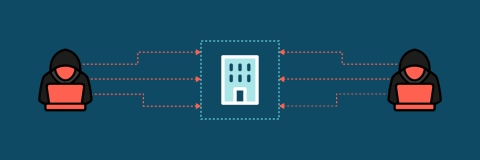Security | Threat Detection | Cyberattacks | DevSecOps | Compliance
January 2024
Why the future of AppSec is ASPM from Snyk AppRisk
Buildkit GRPC SecurityMode privilege check: Build-time container breakout (CVE-2024-23653)
Buildkit build-time container teardown arbitrary delete (CVE-2024-23652)
Buildkit mount cache race: Build-time race condition container breakout (CVE-2024-23651)
Vulnerability: runc process.cwd and leaked fds container breakout (CVE-2024-21626)
Leaky Vessels: Docker and runc container breakout vulnerabilities (January 2024)
CSRF Attacks: Risk Analysis, Protection, and Anti-CSRF Tokens
Security Insights: Jenkins CVE-2024-23897 RCE
How to Automate and Streamline Vulnerability Management Processes
CVE-2024-0204: Critical Authentication Bypass in Fortra's GoAnywhere MFT
Server-Side Template Injection Vulnerability in Confluence Data Center and Server (CVE-2023-22527)
Security Insights: Tracking Confluence CVE-2023-22527
Why the OWASP API Security Top 10 is Essential for Every Business
The Complete Vulnerability Assessment Checklist
Discovery Of A Stored XSS Vulnerability In BlogHub Plugin
CVE-2024-0204: Authentication Bypass Vulnerability in Fortra GoAnywhere MFT
Atlassian Confluence Server and Data Center Remote Code Execution (CVE-2023-22527) - Cato's Analysis and Mitigation
Security Insights: Investigating Ivanti Connect Secure Auth Bypass and RCE
7 tips to become a successful bug bounty hunter
6 Behaviors that Hinder Vulnerability Management Maturity
*nix libX11: Uncovering and exploiting a 35-year-old vulnerability - Part 2 of 2
Akira Ransomware-as-a-Service (RaaS) targeting Swedish organizations
Threat Context Monthly: Executive intelligence briefing for January 2024
How a 0-day event galvanized a developer-led security mindset at DISH
Hackers Ready to Go Anywhere with Critical Vulnerability in GoAnywhere MFT (CVE-2024-0204)
Snyk & IAG
How to automate your technical vulnerability management with Aikido and Vanta
Introducing SwyftComply - Get Clean, Zero-Vulnerability Report in 72 Hours
Overcoming CVE Shock with Effective Kubernetes Vulnerability Scanning
How Cloudflare's AI WAF proactively detected the Ivanti Connect Secure critical zero-day vulnerability
CSRF Vulnerability Discovered In VikRentcar WordPress Plugin 1.3.1
3 tips from Snyk and Dynatrace's AI security experts
CVE-2024-21591: Critical Junos OS Vulnerability Could lead to Unauthenticated Remote Code Execution
CVE-2023-6548 & CVE-2023-6549: DoS and RCE Vulnerabilities Exploited in Citrix NetScaler ADC and NetScaler Gateway
A Step-by-step Guide to URL Verification in Indusface WAS
Two Zero-Day Vulnerabilities Exploited in Citrix NetScaler ADC and NetScaler Gateway
How Jaguar Land Rover and Asda are Building a Modern DevSecOps Culture
How can OWASP MASTG and OWASP MASVS Redefine Your Mobile App Security?
Mobile Application Security - From Vulnerabilities to Vigilance
A Comprehensive Guide on OWASP Top 10 2023 Compliance
Are you looking for vulnerabilities in the right places?
Understanding and mitigating the Jinja2 XSS vulnerability (CVE-2024-22195)
On January 11th, 2024, a significant security vulnerability was disclosed in Jinja2, a widely used Python templating library. Identified as CVE-2024-22195, this cross-site scripting (XSS) vulnerability has raised concerns due to its impact on numerous projects. Jinja2 boasts over 33 million weekly downloads, nearly 10,000 GitHub stars, and over 90,000 dependent projects. The vulnerability affects all versions prior to 3.1.3, with the patched version 3.1.3 being the only safe option.
New Year's security resolutions for 2024 from Snyk DevRel, SecRel, and friends
Transforming what we learned in 2023 to new learning in 2024 will be an exciting and fulfilling journey. In 2023, we saw a huge surge in the use of AI, including cyberattacks utilizing AI and machine learning. We are also seeing an increased awareness in the need for application security posture management (ASPM). Snyk has also launched its own ASPM solution — Snyk AppRisk — designed to help AppSec teams implement, manage, and scale their security programs.
Apache ActiveMQ Vulnerability Leads to Stealthy Godzilla Webshell
Release Spotlight: Orca Connector
*nix libX11: Uncovering and exploiting a 35-year-old vulnerability - Part 1 of 2
The JFrog Security research team has recently discovered two security vulnerabilities in X.Org libX11, the widely popular graphics library – CVE-2023-43786 and CVE-2023-43787 (with a high NVD severity CVSS 7.8). These vulnerabilities cause a denial-of-service and remote code execution. X11’s latest versions contain fixes for these vulnerabilities.
Navigating the Shift: From Vulnerability Management to Continuous Threat Exposure Management
In the rapidly evolving cybersecurity landscape, organizations face an ever-increasing barrage of threats. Traditional vulnerability management, while foundational, often falls short in proactively and continuously identifying and mitigating threats. This necessitates a paradigm shift towards Continuous Threat Exposure Management (CTEM), a more dynamic approach that aligns with the complexities of today’s digital environments.
What is XML-RPC? Benefits, Security Risks, and Detection Techniques
Two Critical Vulnerabilities Impacting GitLab Community Edition and Enterprise Edition
GitLab has addressed two critical vulnerabilities in the GitLab Community Edition and Enterprise Edition that require immediate attention.
Beyond the Facade: Unraveling URL Redirection in Google Services
Snyk welcomes Helios, accelerating our ASPM vision with runtime insights
As applications and their software supply chains become more complex, designing an AppSec program that is agile enough to keep pace, while still providing a clear, enterprise-wide view of risk requires a deep understanding of applications — depth that covers every line of code and package from development all the way to their live, running state.
Critical Apache OFBiz Zero-day AuthBiz (CVE-2023-49070 and CVE-2023-51467)
CVE-2024-21887 and CVE-2023-46805: Actively Exploited Vulnerabilities in Ivanti Secure Products Chained Together to Achieve Unauthenticated RCE
CVE-2024-20272: Critical Unauthenticated Arbitrary File Upload Vulnerability in Cisco Unity Connection
Two Zero-Day Vulnerabilities Impacting Ivanti Connect Secure and Policy Secure Gateways
Note: These vulnerabilities remain under active exploitation, and Kroll experts are investigating. If further details are uncovered by our team, updates will be made to the Kroll Cyber Risk blog. Two zero-day vulnerabilities have been discovered in Ivanti Connect Secure (ICS), formerly known as Pulse Connect Secure and Ivanti Policy Secure gateways.
Critical flaw found in WordPress plugin used on over 300,000 websites
Snyk and ServiceNow
TASConnect and Snyk
Connect Secure No More: Ivanti's Zero-Day Vulnerabilities (CVE-2024-21887 and CVE-2023-46805)
Threat Intelligence Research
As part of our effort to make the world safer, SecurityScorecard has been tracking threat actor groups conducting cyberattacks on behalf of nation states.
How to Adapt Vulnerability Management Service Level Agreements (SLAs) to Team Maturity
Security warning! All of us are victims of open-source vulnerabilities
Picture this: A user on your network casually explores the internet and scrolls through a website’s comment section. However, a lurking threat known as cross-site scripting (XSS) is poised to exploit vulnerabilities and steal their session cookies, which includes sensitive data such as their logon credentials. But how does this nefarious scheme unfold, and what other open-source vulnerabilities could be exploited in the process?
Mastering Python virtual environments: A complete guide to venv, Docker, and securing your code
Python, as a versatile and widely used programming language, has an extensive ecosystem of modules and packages. As you navigate this ecosystem, it's important to understand the role of virtual environments. In this article, we will delve into what virtual environments are, why developers need them, and some common tools for creating Python virtual environments.
GitLab Vulnerabilities And Security Incidents: 2023 In Review
CVE-2023-39336: Remote Code Execution Vulnerability Found in Ivanti EPM
Ivanti released a patch for a critical vulnerability discovered in Ivanti Endpoint Manager (EPM) that could allow for remote code execution (RCE). This vulnerability is being tracked as CVE-2023-39336 with a CVSS score of 9.6 (Critical), which is not yet actively exploited. All versions of Ivanti EPM prior to Service Update 5 are impacted. Ivanti credits security researcher hir0t for the responsible disclosure.
CVE-2023-39336: SQL Injection Vulnerability in Ivanti Endpoint Manager
How to choose a security tool for your AI-generated code
“Not another AI tool!” Yes, we hear you. Nevertheless, AI is here to stay and generative AI coding tools, in particular, are causing a headache for security leaders. We discussed why recently in our Why you need a security companion for AI-generated code post. Purchasing a new security tool to secure generative AI code is a weighty consideration. It needs to serve both the needs of your security team and those of your developers, and it needs to have a roadmap to avoid obsolescence.
CVE-2023-50916: Authentication Coercion Vulnerability in Kyocera Device Manager
CyRC Vulnerability Advisory: CVE-2023-51448 Blind SQL Injection in SNMP Notification Receivers
Securing JavaScript: Best Practices and Common Vulnerabilities
JavaScript is the most commonly-used programing language, according to the most recent StackOverflow developer survey. While JavaScript offers great flexibility and ease of use, it also introduces security risks that can be exploited by attackers. In this blog, we will explore vulnerabilities in JavaScript, best practices to secure your code, and tools to prevent attacks.
Build and deploy a Node.js security scanning API to Platformatic Cloud
In this guide, we'll dive into the powerful combination of Platformatic and Fastify, unlocking rapid backend development with an emphasis on robustness and security. Whether you're a seasoned Node.js developer or just starting out, this article is a helpful start to enhancing your familiarity with Node.js PaaS environments such as Platformatic.
The Apache Log4J Vulnerability: Questionnaire & VRM Tips
7 Top Vendor Vulnerability Management Tools
Proactive Vulnerability Management is a No Brainer for Security, but...
In December 2022, the US Cybersecurity and Infrastructure Security Agency (CISA) identified exploits against vulnerable public-facing applications as the most common initial attack vector for cybercriminals, followed by attacks on external remote services such as VPNs. According to a study by CrowdStrike, exploit activity targeting cloud apps and assets grew 95% from 2021 to 2022, and instances of threat actors directly targeting cloud apps exploded by 288% during that period.
Don't get hacked! Apply the right vulnerability metrics to Kubernetes scans
What To Look For in an Open Source Vulnerability Scanner
One of the top security concerns we hear from technology leaders is about the security of open source software (OSS) and cloud software development. An open source vulnerability scanner (for scanning OSS) helps you discover risk in the third-party code you use. However, just because a solution scans open source does not mean you are ultimately reducing security risk with it.
Broken Access Control | OWASP TOP 10
Mend's Handy Guide to Using EPSS Scores
Krampus delivers an end-of-year Struts vulnerability
On December 20, 2023, NIST updated a CVE to reflect a new path traversal vulnerability in struts-core. This is CVE-2023-50164, also listed on the Snyk Vulnerability database, with 9.8 critical severity CVSS. If you’ve been doing cybersecurity long enough, you remember the 2017 Equifax breach, which also took place due to an unpatched Struts vulnerability. In this post, I outline the issue, discuss its severity, walk you through a proof-of-concept exploit, and provide remediation advice.
Kroger's approach to supply chain security
Recently, Snyk hosted a wine tasting & customer discussion featuring David Imhoff, Product Security Leader at Kroger. The discussion focused on tackling the challenges of securing digital supply chains. Kroger is a retail giant with 2,700 stores and 400,000 employees. The organization faces unique challenges because it operates on such a massive scale, adding complexity to its software supply chain and security.
How to monitor your organization's presence on the dark web
Googling your organization’s name will bring up all sorts of information. However, there’s more to the internet than the surface web that’s accessed through regular search engines: the deep web and the dark web. To stay ahead of potential threats and maximize incident response performance, security teams need a complete view of their organization’s presence across all areas of the internet.
The scope of cybersecurity in 2024: Predictions from the experts
Coming into 2023, we predicted that the economic downturn would fuel sophisticated fraud, the growth of serverless workloads will increase the attack surface, and there would be more MFA bombing attacks. As we look to 2024, Outpost24’s team of security experts have predicted the emerging threats that will shape the cybersecurity landscape. Dark AI tools, and a shift in security priorities are some of the challenges that organizations will face.



